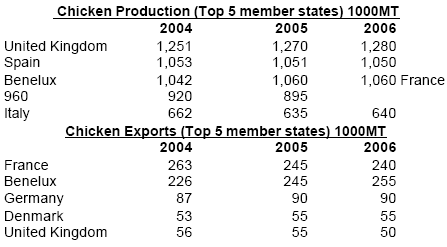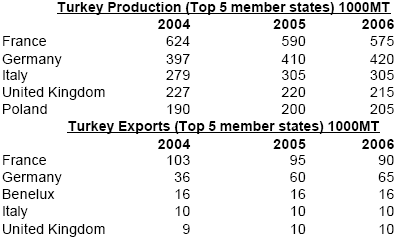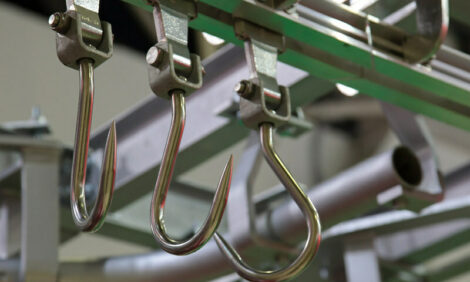



International Egg and Poultry Review
By the USDA's Agricultural Marketing Service - This is a weekly report looking at international developments concerning the poultry industry, this week looking at Avian Influenza across the globe.
Avian Influenza and the OIE Terrestrial Animal Health Code
A highly pathogenic form of avian influenza first appeared in Italy around
1878. Sporadic outbreaks have since occurred around the world. In
2003 an outbreak of HPAI in the Netherlands spread to parts of Belgium
and Germany and resulted in the loss of more than 28 million poultry,
in 2004 Canada lost over 16 million birds in to an outbreak of HPAI, and
as of January 2004, FAO estimated that around 20-25 million birds had
been culled in Asia.
To date, all highly pathogenic isolates have been influenza A viruses of
subtypes H5 and H7.
At the 73rd General Session of the World Organization for Animal Health
held in May 2005, the delegates adopted changes in the obligations of
OIE Member Countries to notify avian influenza (“notifiable avian
influenza”).
The new definition of notifiable AI (NAI) is defined as an infection of
poultry caused by any influenza A virus of the H5 or H7 subtypes or by
any AI virus with an intravenous pathogenicity index (IVPI) greater than
1.2 (or as an alternative at least 75% mortality) as described in Chapter
2.7.12 of the OIE Terrestrial Animal Health Code. NAI viruses can be
divided into low-pathogenic notifiable AI (LPNAI) or highly pathogenic
notifiable AI (HPAI). The change will come into effect on January 1,
2006.
Another change is the regionalization with specific requirements to
declare an area free of NAI. A country, zone or compartment may be
considered free from NAI. A compartment means one or more
establishments under a common biosecurity management system
containing an animal subpopulation with a distinct health status with
respect to a specific disease or specific diseases for which required
surveillance, control and biosecurity measures have been applied for
the purpose of international trade. A zone/region means a clearly
defined part of a country containing an animal subpopulation with a
distinct health status with respect to a specific disease for which
required surveillance, control and biosecurity measures have been
applied for the purpose of international trade.
Source: UK Department for Environment Food and Rural Affairs, United
Nations Food and Agriculture Organization, OIE Terrestrial Animal
Health Code, USDA/AMS
Indonesia
Over nine million chickens have died in Indonesia since the first
outbreak in 2003. The disease has been found in 21 out of 30 provinces.
Officials used surveillance programs, vaccinated healthy chickens and
only culled sick chickens. Pigs have also tested positive for H5N1.
After the country’s first human death from H5N1 was confirmed in July
2005, officials announced a decision to cull all chickens and pigs in
the affected areas.
The Agriculture Minister said the culling operation would cost up to 800
billion rupees (US 84.2 million), but the department only has 104 billion
available and will only cull infected poultry and pigs .
Source: News wires
EU Poultry Situation
Broiler production is forecast to increase in 2005, and slightly in 2006,
but at a lower pace than domestic consumption, resulting in an expected
increase in imports. Exports are expected to decrease marginally in
2005 and stabilize in 2006.

Turkey production is forecast to increase in 2005 and 2006. The only
turkey slaughter plant in Denmark closed operations in April 2004.
Turkey imports from Brazil accounted for 85 percent of EU imports in
2004. Imports are expected to increase in 2005 and 2006. Exports are
expected to increase slightly in 2005 and 2006.

Poultry production has mostly recovered from the 2003 Avian Influenza
outbreak in the Benelux (Belgium, Netherlands, Luxembourg) or the
2003 nitrofuran scare in Portugal, producers and processors in both
the EU-15 and the NMS are still adapting to the new market situation
that arose as a result of the 2004 Enlargement process.
Increasing competition in world markets and decreases in EU export
refund levels are driving poultry and turkey production down in France
and Spain in 2005. In the Benelux, UK and Germany production is
increasing, in part due to increased domestic consumption.
Source: USDA/FAS
To view the full report, including tables please click here
Source: USDA's Agricultural Marketing Service - 26th July 2005








